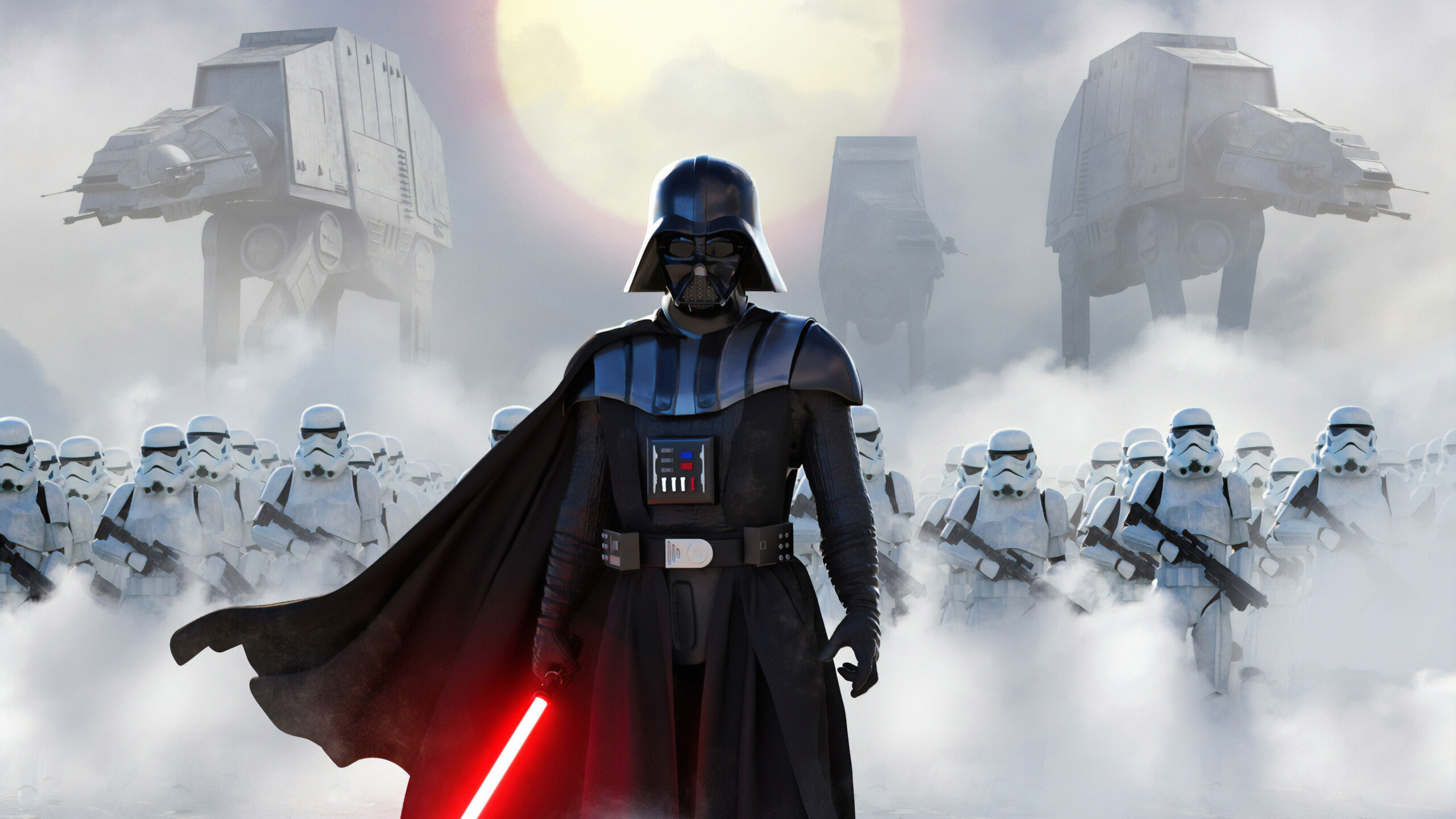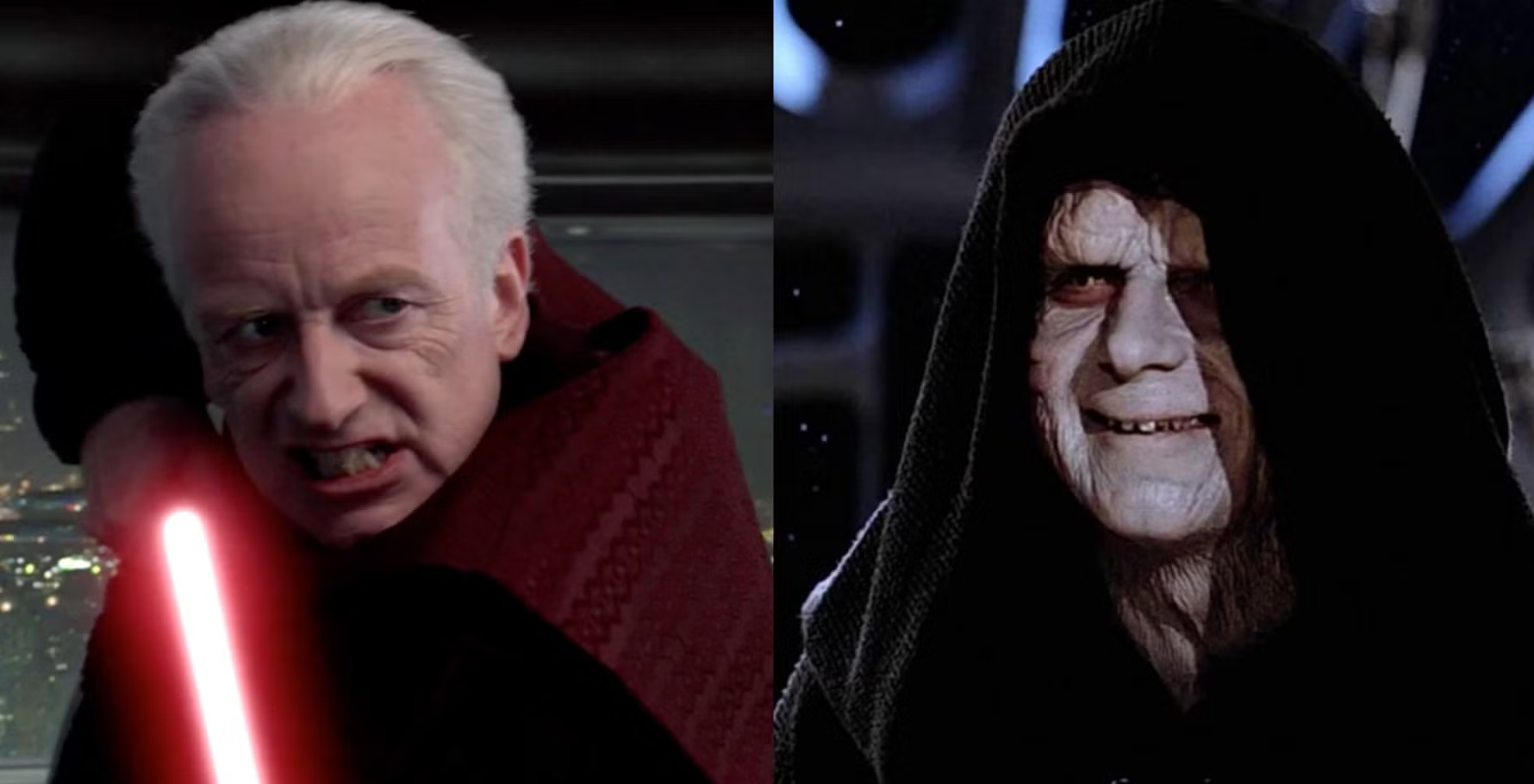The Dark Secrets of Darth Vader and Emperor Palpatine’s Power Struggle reveal the intricate layers of manipulation, ambition, and tragedy that underlie one of the most compelling relationships in the Star Wars saga. At first glance, it appears to be a simple tale of good versus evil, but upon closer examination, the dynamics between these two iconic characters unveil a complex web of power, control, and the haunting ramifications of their choices.
In this article, we will delve deep into this tumultuous relationship, exploring its beginnings, the psychological battles at play, and ultimately, how their struggle for power shaped not only their destinies but the fate of the galaxy itself.
The Rise of Darkness: Anakin Skywalker’s Transformation
The transformation of Anakin Skywalker into Darth Vader is one of the most tragic and pivotal arcs in the Star Wars narrative. It serves as the foundation for understanding the Dark Secrets of Darth Vader and Emperor Palpatine’s Power Struggle. Anakin’s journey from a hopeful Jedi to a feared Sith Lord is not merely a shift in allegiance; it represents the emotional and psychological turmoil that leads to his eventual subservience to Palpatine.
>>> Buy now: What motivated Bruce Wayne to become a member of the Dark Knight
The Allure of Power
Anakin Skywalker was initially viewed as the Chosen One—a prodigious talent within the Jedi Order. His innate connection to the Force made him a beacon of hope, yet he was plagued by insecurities and fears, primarily revolving around loss. These fears were expertly exploited by Palpatine, who presented Anakin with tantalizing promises of power and immortality.
Palpatine played on Anakin’s vulnerabilities, positioning himself as a mentor and father figure. He used flattery and manipulation to draw Anakin closer, fostering an unhealthy dependency that would later become crucial in their power struggle. Anakin’s desire to protect those he loved morphed into an obsession, leading him down a path where he believed that only through power could he achieve his goals.
This manipulation laid the groundwork for .Anakin’s eventual fall. The allure of power became a double-edged sword, as it not only offered him the means to achieve his desires but also trapped him in a dark cycle of servitude to Palpatine
The Manipulative Mentor
As Palpatine drew Anakin deeper into the dark side, he effectively became a puppet master, orchestrating events to keep Anakin off-balance and vulnerable. This strategic manipulation was not just about converting Anakin to darkness; it was also about ensuring that he remained loyal and obedient.
One of the most insidious aspects of Palpatine’s manipulation was his ability to create wedges between Anakin and the Jedi Council. By framing the Jedi’s actions as hypocritical and limiting, Palpatine nurtured Anakin’s growing disillusionment with the Order. This isolation further solidified Anakin’s reliance on Palpatine as his sole confidant and ally.
The transition from mentor to manipulator signifies a critical moment in their power struggle. Anakin began to see Palpatine not just as a mentor but as the key to unlocking his true potential. Little did he know that Palpatine’s true intentions were far more sinister than any guidance he had previously received.
The Descent into Darkness
The act of betraying the Jedi and embracing the dark side culminated in Anakin’s transformation into Darth Vader. In sacrificing everything he once held dear, Anakin became a mere instrument of Palpatine’s will—an enforcer of tyranny.
However, beneath the imposing exterior of Darth Vader lay a conflicted soul tormented by guilt and regret. Palpatine’s hold over him was absolute, yet the remnants of Anakin’s humanity lingered, creating a constant internal conflict. This duality became central to their ongoing power struggle; while Vader outwardly embodied the Emperor’s authority, he wrestled with the lost fragments of the Jedi he used to be.
The seeds of resentment that took root during his transformation would eventually blossom into a desire for autonomy—a yearning for self-determination that would shape the course of their turbulent relationship.
The Psychological Game: Manipulation and Control
Palpatine’s mastery of manipulation goes beyond mere persuasion; it encompasses intricate psychological games designed to maintain control over Vader. Their dynamic was a constant push and pull, characterized by fear, loyalty, and buried ambition.
Fear as a Tool
The foundation of Palpatine’s control over Vader rested heavily on fear. He understood that the path to the dark side was paved with trepidation, a realization that allowed him to wield power over his apprentice effectively. By constantly reminding Vader of the consequences of failure—both for himself and for those he loved—Palpatine created a climate of dread that suffocated any potential rebellion.
Palpatine’s tactics extended beyond verbal threats; he showcased the destructive capabilities of the dark side, reinforcing the notion that surrendering to it was the only means of survival. As Vader learned to embrace the terror he instilled in others, he simultaneously became ensnared in a cycle of fear himself—a cruel irony that encapsulated their tumultuous relationship.
The Illusion of Choice
Another dimension to Palpatine’s control involved the clever illusion of choice. He often framed his directives as empowering rather than coercive, suggesting that accepting the dark side was an act of free will. This manipulation masked Vader’s reality: he was less a participant in his destiny than a pawn in Palpatine’s grand design.
Through carefully curated scenarios, Palpatine crafted situations where Vader felt compelled to make decisions that ultimately aligned with the Emperor’s ambitions. Rather than presenting himself as a dictator, Palpatine posed as an ally, planting ideas in Vader’s mind that led him to believe he was acting independently.
Ultimately, this illusion of choice served to deepen Vader’s entrapment. The more he believed he was acting on his own volition, the tighter Palpatine’s grip became, leaving Vader caught in a web from which he struggled to escape.
The Accumulation of Power
While Palpatine skillfully manipulated Vader, he simultaneously worked to accumulate power for himself. He understood that keeping Vader in a subservient role was essential for maintaining control over the Galactic Empire.
By limiting Vader’s access to knowledge and information, Palpatine ensured that his apprentice remained dependent on him for counsel and guidance. In doing so, he thwarted any potential efforts by Vader to forge alliances or seek support from other dark-side users. This strategy not only reinforced Palpatine’s dominance but also stunted Vader’s growth as a formidable opponent.
The accumulation of power within Palpatine was a deliberate tactic to prevent any challenges to his authority. He maintained a façade of unity while ensuring that the scales tipped heavily in his favor—a classic example of Machiavellian politics that defined their relationship.
Father and Son: The Catalyst for Change
The revelation of Luke Skywalker as Vader’s son introduced a seismic shift in the balance of power within their dynamic. This unexpected twist created new opportunities for rebellion, redemption, and ultimately, the unravelling of Palpatine’s carefully constructed empire.
A New Hope
For Darth Vader, the existence of Luke represented more than just familial ties; it symbolized a chance for redemption. Luke’s innocence and unwavering belief in the good still present in his father stirred something deep within Vader—a flicker of hope amidst the engulfing darkness.
Vader’s pursuit of Luke, initially motivated by Palpatine’s machinations, transformed into a personal quest for reconciliation. He yearned not only to reclaim what he had lost but to forge a new identity apart from the shackles of Palpatine’s influence. This emotional complexity added layers to Vader’s character, demonstrating that even in the darkest of souls, the light can endure.
The Power of Connection
Luke’s arrival prompted Vader to reevaluate his loyalties. Their emotional bond became a potent weapon against Palpatine’s control, challenging the very foundation of the Emperor’s dominion. As Vader’s interest in turning Luke to the dark side evolved into a protective instinct, the dynamic shifted dramatically—the Emperor’s plans began to unravel.
Moreover, the presence of familial love ignited a passion that had long been extinguished within Vader. It inspired him to consider the life he could have led, free from Palpatine’s oppressive reign. This newfound motivation also served as a stark contrast to Palpatine’s calculated manipulation, underscoring the enduring strength of love and connection.
The Catalyst for Rebellion
As Vader grappled with the possibility of redeeming himself through his son, Palpatine became increasingly aware of the threat posed by their burgeoning bond. The Emperor launched a campaign to manipulate Luke directly, believing that by corrupting him, he could reassert his dominance over Vader.
In essence, Palpatine attempted to eliminate the catalyst for change that Luke represented. He sought to turn the father against the son, hoping to eradicate any semblance of rebellion that threatened his authority. However, this strategy proved to be counterproductive; the more Palpatine pushed, the more Vader began to question his own loyalties.
The emotional conflict came to a head during the climactic confrontation on the second Death Star, where both Vader and Palpatine were set on a collision course that would redefine their power struggle.
The Climactic Battle: The Revelation of True Power
The final confrontation between Darth Vader and Emperor Palpatine stands as a pivotal moment in the narrative, highlighting the culmination of their complex relationship. This battle, both physical and ideological, epitomizes the fracture lines that had developed throughout their tumultuous alliance.
The Duel of Fates
The duel between Vader, Luke, and Palpatine was more than just a physical battle; it was a clash of wills that encapsulated the entire essence of their power struggle. Vader found himself torn between the remnants of Anakin Skywalker and the dark persona of Darth Vader—each vying for dominance in his heart.
As the lightsabers clashed, it became evident that the stakes extended beyond mere victory or defeat; this was a moment of reckoning for Vader. The duality within him bubbled to the surface, forcing him to confront the choices he had made and the path he had walked. With each strike against Palpatine’s forces, Vader inched closer to reclaiming his identity.
The Moment of Redemption
In the face of Palpatine’s relentless manipulation, a pivotal moment emerged when Vader chose to protect Luke, defying the Emperor’s orders. In that instant, the power dynamics shifted irrevocably. The son he had pursued not merely out of duty but out of love became a beacon of light, drawing Vader back from the abyss.
This act of rebellion marked a profound turnaround for Vader. By rejecting Palpatine’s influence, he reclaimed not only his agency but also the remnants of his former self. His choice to embrace love over fear sent shockwaves through the Emperor’s carefully constructed facade, revealing the fundamental weakness in Palpatine’s grip on power.
The Fall of the Emperor
As Vader turned against Palpatine, the full weight of their power struggle bore down on the Emperor. In attempting to harness the dark side’s energy to destroy his own son, Palpatine inadvertently precipitated his downfall. Vader’s defiance culminated in a visceral act of revenge; the man who had once been a mere tool of tyranny now stood as the architect of the Emperor’s demise.
This moment encapsulates the core theme of the Dark Secrets of Darth Vader and Emperor Palpatine’s Power Struggle—the idea that true strength lies not in domination and fear, but in the courage to choose compassion and love, even against insurmountable odds.
The relationship between Darth Vader and Emperor Palpatine is a haunting reflection of the complexities of power, manipulation, and redemption. Throughout the Dark Secrets of Darth Vader and Emperor Palpatine’s Power Struggle, we witness the evolution of two iconic figures intertwined in a tumultuous dance of control and resistance.
Palpatine’s Machiavellian tactics serve as a reminder of the dangers of unchecked power and the lengths one might go to maintain dominance. Meanwhile, Vader’s internal conflict highlights the enduring power of love and the possibility for redemption despite the darkest of pasts.
>>> Read more: What motivated Bruce Wayne to become a member of the Dark Knight
As the echoes of their struggle resonate through the galaxy, they remind us of a fundamental truth: that every individual possesses the potential for change, and that sometimes, the greatest battles are waged not only against external foes but also within oneself. The legacy of their power struggle continues to inspire, urging us all to embrace our own light in the face of overwhelming darkness.





